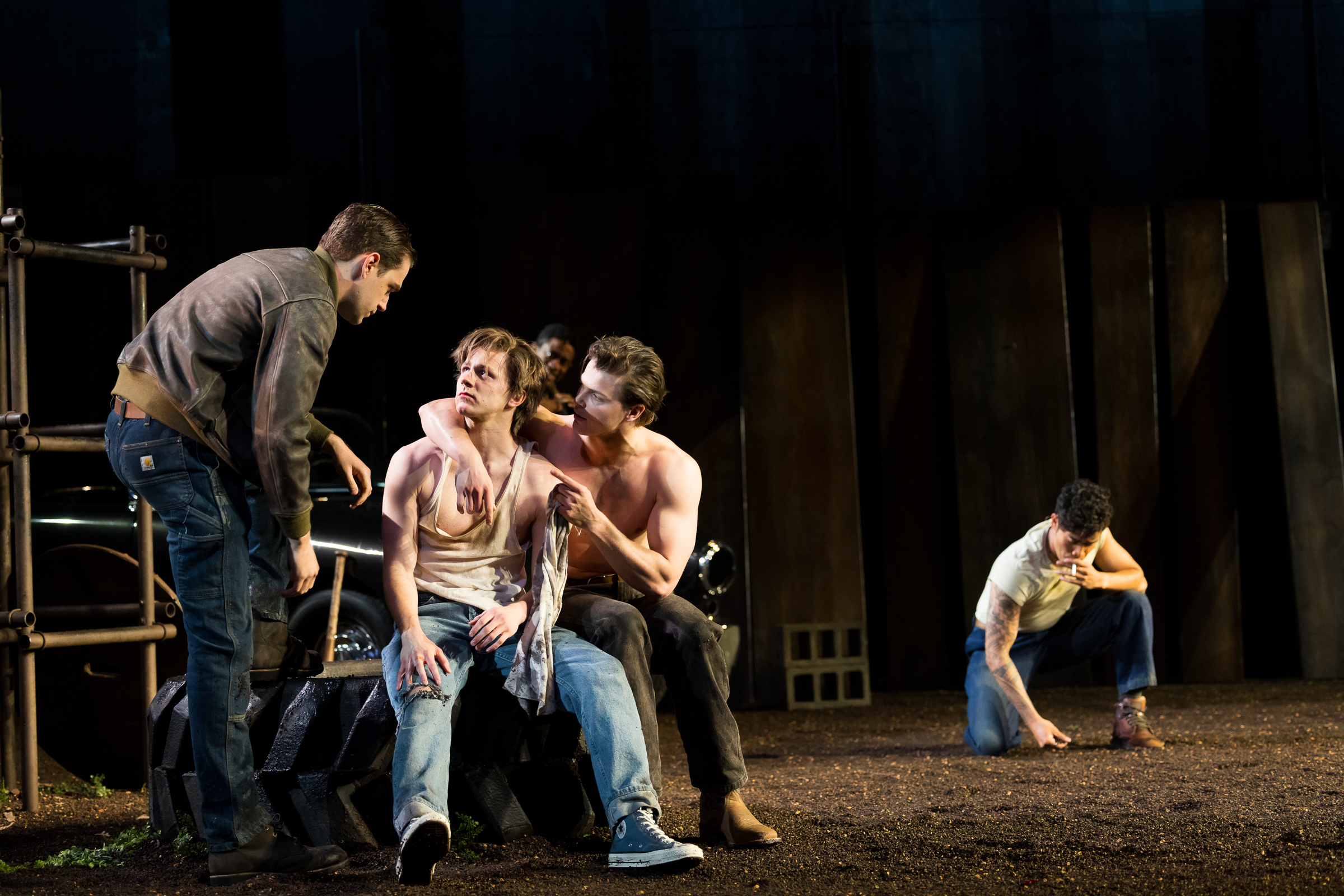Broadway Adaptation of “The Outsiders”

The outsiders broadway – The Broadway adaptation of S.E. Hinton’s classic novel “The Outsiders” debuted in 2005, bringing the timeless story of teenage rebellion and loyalty to the stage. The musical adaptation sought to capture the novel’s themes of identity, social class, and the search for belonging in a poignant and engaging way.
Casting, The outsiders broadway
The casting of the Broadway production was crucial to capturing the essence of the characters. The actors brought a raw energy and authenticity to their roles, embodying the struggles and triumphs of the Greasers and Socs.
Set Design
The set design played a significant role in creating the atmosphere of the story. The use of industrial elements, graffiti, and dim lighting evoked the gritty urban setting of the novel, immersing the audience in the world of the characters.
Musical Score
The musical score, composed by Adam Guettel, seamlessly integrated with the narrative. The songs ranged from soulful ballads to energetic rock anthems, enhancing the emotional impact of the story and capturing the characters’ inner turmoil.
Critical Reception and Audience Response
The Broadway adaptation of “The Outsiders” received mixed reviews from critics. While some praised its powerful performances and emotional depth, others found it lacked the nuance and complexity of the novel. Despite the mixed reviews, the production was a commercial success, running for over 300 performances.
Themes and Characters in “The Outsiders” Broadway: The Outsiders Broadway

The Broadway adaptation of “The Outsiders” remains faithful to the novel’s central themes of identity, social class, and the search for belonging. Through powerful dialogue, evocative music, and innovative staging, the production explores these themes with depth and nuance.
Main Characters
The story revolves around a group of teenage boys from different social classes who struggle to find their place in a divided society. The main characters include:
- Ponyboy Curtis: A sensitive and intelligent narrator who witnesses the violence and injustice of the world around him.
- Johnny Cade: A timid and vulnerable boy who faces a tragic fate.
- Dally Winston: A rebellious and hardened member of the gang who represents the destructive side of the greaser culture.
- Darry Curtis: Ponyboy’s older brother who tries to keep his family together while struggling with his own demons.
- Sodapop Curtis: Ponyboy’s older brother who provides a sense of hope and optimism.
Themes
The Broadway adaptation explores the following central themes:
- Identity: The characters struggle to define themselves and find their place in a society that labels them based on their social class.
- Social Class: The play depicts the stark divide between the wealthy Socs and the working-class greasers, highlighting the social inequalities that shape their lives.
- The Search for Belonging: The characters yearn for a sense of community and acceptance, but their search is often thwarted by societal barriers.
- Violence and Loss: The play confronts the devastating consequences of violence, both physical and emotional.
- Hope and Redemption: Despite the darkness and tragedy, the play also offers glimmers of hope and the possibility of redemption.
Portrayal through Dialogue, Music, and Staging
The Broadway adaptation uses dialogue, music, and staging to effectively convey the themes and characters of the story.
- Dialogue: The dialogue is raw and authentic, capturing the voices of the teenage characters and their struggles.
- Music: The original score and sound design create an immersive atmosphere that enhances the emotional impact of the story.
- Staging: The staging is dynamic and innovative, using projections, movement, and lighting to create a visually stunning and emotionally resonant experience.
Historical and Cultural Impact of “The Outsiders” Broadway

The Broadway adaptation of “The Outsiders” debuted in 1990, a time when social issues such as gang violence, class conflict, and adolescent identity were prevalent in American society. The musical resonated with audiences due to its timeless themes and its exploration of these complex issues.
Cultural Impact
The Broadway adaptation of “The Outsiders” has had a profound cultural impact, influencing popular culture and raising awareness about social issues:
- Influence on Popular Culture: The musical’s iconic songs, such as “Stay Gold” and “Ponyboy,” have become widely recognized and have been covered by numerous artists. The characters and themes of the musical have also been referenced in other works of art, including films, television shows, and novels.
- Raising Awareness About Social Issues: The musical’s portrayal of gang violence and class conflict has helped to raise awareness about these issues and their impact on young people. The musical has been used as an educational tool in schools and community centers to promote understanding and empathy among different social groups.
- Inspiration for Social Movements: The musical’s message of hope and unity has inspired social movements and activism among young people. The musical’s themes have been used to promote anti-violence campaigns and to encourage dialogue between different social groups.